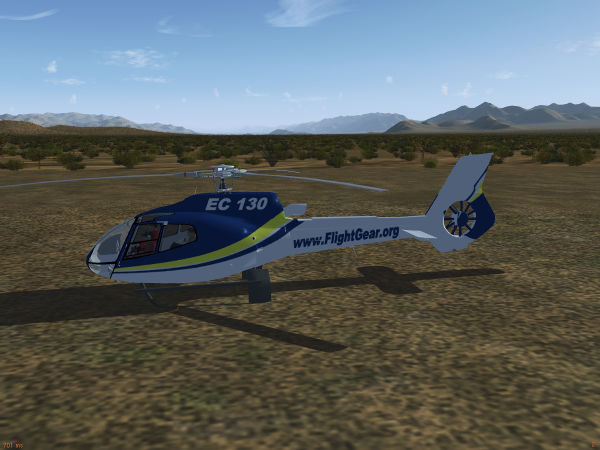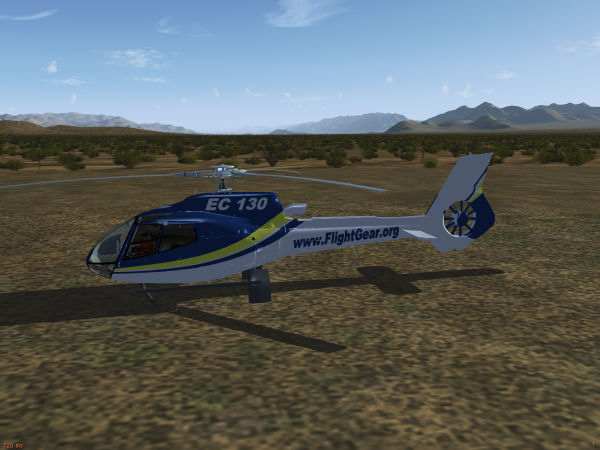Howto:Add effects to an aircraft
| Work in progress This article or section will be worked on in the upcoming hours or days. See history for the latest developments. |
This article is an introduction how to use the Flightgear Effect framework as a contributor - mainly for aircraft, but in principle also for scenery models.
What are effects?
Simply put, effects are instructions for the graphics card how a given surface is rendered. In FG, most effects can be seen as something like configuration files for [[Shaders] (i.e. GLSL code that is directly executed on the graphics card).
Per default, all meshes are processed using a Blinn-Phong shading model which uses a combination of ambient, diffuse and specular lighting. This looks generally acceptable, but does not really capture the properties of many materials.
GLSL shaders on the other hand can (and do) solve much more complicated lighting equations than Blinn-Phong does, taking into account things like environment reflections, Fresnel small angle reflections, diffuse irradiance from skylight, etc. In addition, shaders can also process additional information on structures not captured by the 3d mesh triangles, for instance via normal maps.
To get a visual idea, compare the following two images (you may have to magnify them to fullscreen to appreciate the details). The first one is processed by a default Blinn-Phong scheme.
The second one is processed by a shader which utilizes among other things normal and irradiance mapping:
The differences are perhaps subtle, but combine to a much more realistic impression. Thus, effects are what turns a good 3d model into a great 3d model.
Useful concepts
It's worth looking into some things which are specified already at the creation stage of a 3d model (i.e. set by blender or ac3d).
Materials
Materials belong to the Blinn-Phong scheme and tell how a surface looks like when rendered in the scheme. A material is comprised of four different colors, each as (rgb) triplets. The ambient color channel is multiplied with the scene ambient light and determines what in what color surfaces in shadow appear. The diffuse color channel is multiplied with the scene diffuse color and determined how surfaces in light appear, and the specular color channel is multiplied with the scene specular color and determines the color of specular highlights. Finally, the emissive color channel determines a color independent of the scene light.
In addition, a material has a transparency which determines to what degree one can see through the surface and a shininess which determines how glossy the surface looks (i.e. how narrow the specular highlights appear).
The end color of a pixel in Blinn-Phong is determined by summing all channels and multiplying with the texture color. Thus, textured models should not use colored materials (or the texture won't appear in its natural color). Generally it is a good idea for textured models to use a white diffuse color (1,1,1) in the material and a grey ambient with a value of 0.3 to 0.5 according to the desired darkness of shadows. The specular color should usually be white (1,1,1) too, unless there's a compelling reason not to (a metallic material where specular color should match the diffuse color, or a lighter shade thereof). The most common mistake for beginners is to neglect the ambient channel, in which case shadows tend to appear too bright, or to assign an emissive color which makes the model glow at night.
The way Flightgear treats models, each surface (face) can have one (and only one) material assigned - make sure you understand what it is and how to alter it in the 3d modeling tool of your choice.
Objects
Objects are parts of a 3d model which are grouped together. They consist of a mesh, material[s] assigned to the faces of that mesh and, optionally, the texture associated with it. They have a unique name assigned. In the FG effect framework, an effect is always assigned to an object.
The relevance of grouping into objects is that the graphics card processes models in so-called draw calls. Before each draw call, the so-called state set needs to be prepared (mainly texture sheets, material parameters and positioning matrices configured by animations) and this costs some time. The net effect is that it is far faster to render a million vertices in one draw than in thousand draws a thousand vertices each. Due to the limitations of the AC3D model format used by FlightGear, different parts of an object cannot be assigned to different texture sheets, thus for each extra texture sheet there will be an extra object and ultimately an extra draw call, having as a result that four 1k texture sheets are less efficient than the same data on a single 2k texture sheet because there's 4x less draw calls.
Thus, anything that can be combined into one object also should be combined into one object, and the number of texture sheets used should be as low as possible.
Make sure you understand how to group things into objects and assign object names in the 3d modeling tool of your choice.

